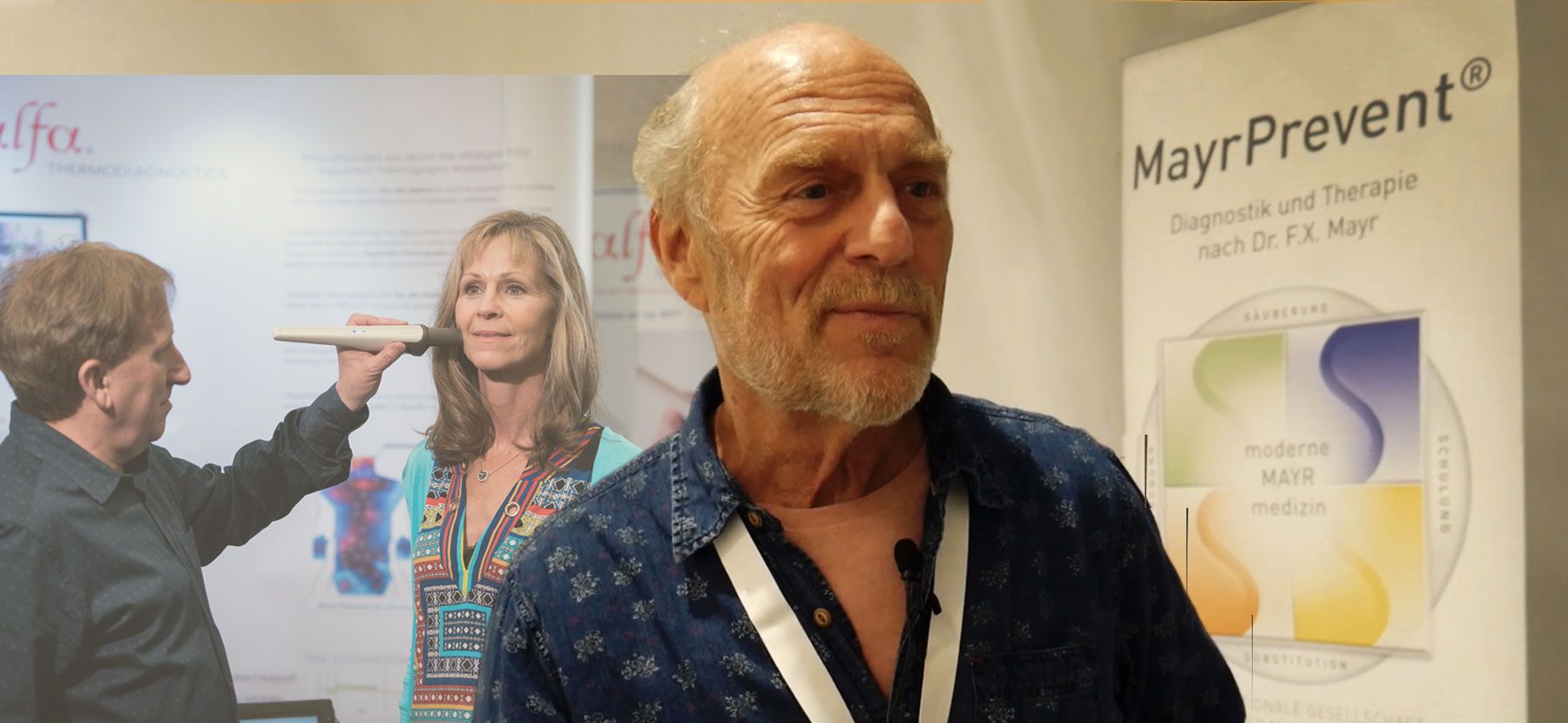Dr. Dietrich Klinghardt MD, PhD. comments on the AlfaSight during the prestigious Medicine Week in Baden-Baden

“The principle of regulation thermography, I learned 15 years ago from Dr. Islers in Germany who was a friend of mine, and Alfa Thermography is the modern version of using all of the capabilities of a computer in conjunction with the measurements.
The principle is a reflex from the skin to the inner organs, and the temperature on the skin reflects the temperature in the inner organs in that segment, which most people don’t know.
In thermography, we use co-challenge to see if the skin withdraws its temperature in order to conserve the body heat, and in the skin overlining healthy organs or healthy teeth, this regulation is perfect. [With] cold exposure, the body withdraws the excessive blood flow in the skin and the skin gets a little colder.
In Alfa Thermography, you find very very accurate, the smallest places in the body, where this regulation is not working. And the lack of response to the cold predicts medical illness - areas that lose the autonomic innervation of the adaptability of the autonomic nervous system. When that is lost, there is an indication of toxicity, indication of chronic infection, an indication that the body will become ill in that area and alfa thermography takes that one step further by finding patterns. Like for example, when the area over the spleen is not regulating and the area of the tonsils is not regulating and certain other body areas, this may be a hint of an autoimmune disease, and there is a pattern now for many of the chronic illnesses that we have no other diagnostic work for.
We can predict general toxicity, low grade infections, bacterial infections vs. viral infections, and so forth. And so, it’s a tool that has taken thermography really into the next century and we use it in my practice on every patient in order to not overlook important underlying issues. And this pattern recognition, which is really the combined work for many medical doctors, the knowledge brought together, this pattern recognition is really something that doesn’t exist anywhere else in medicine, so it’s a wonderful tool.”